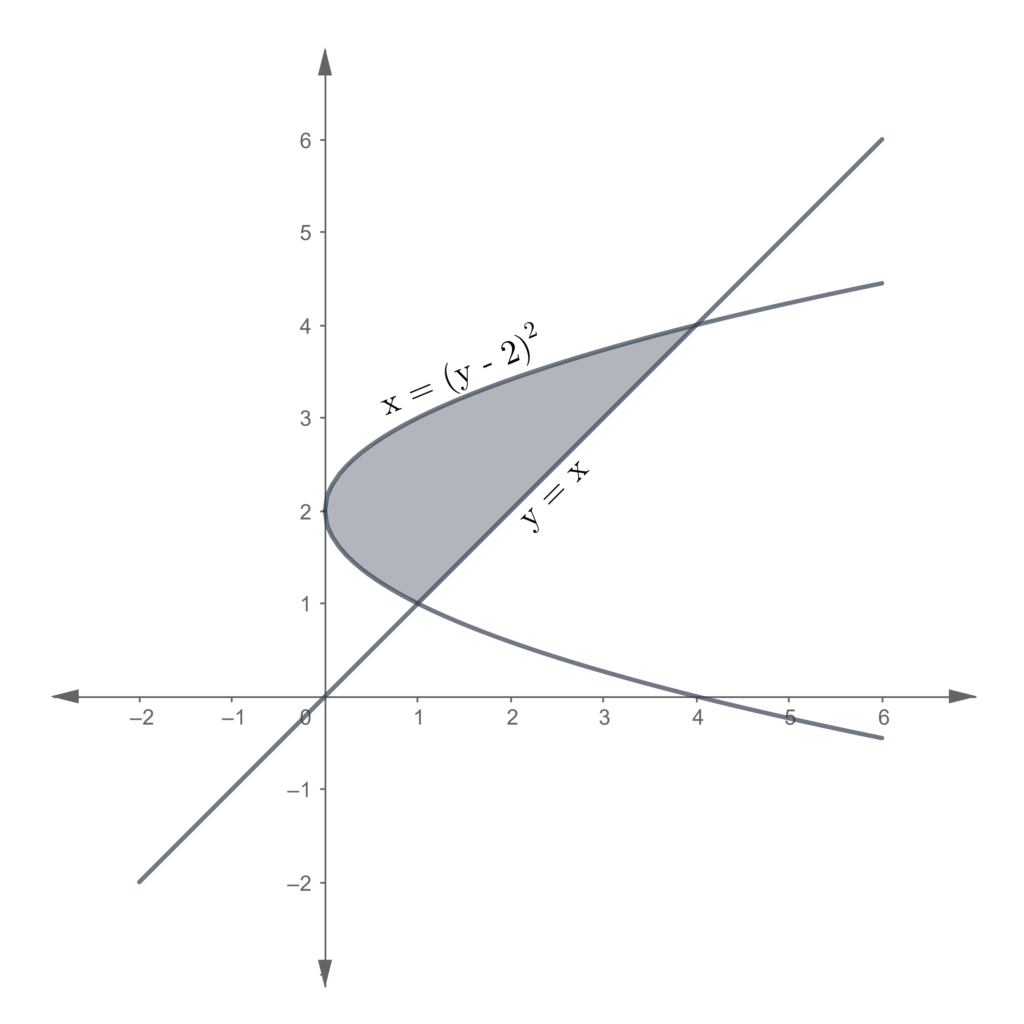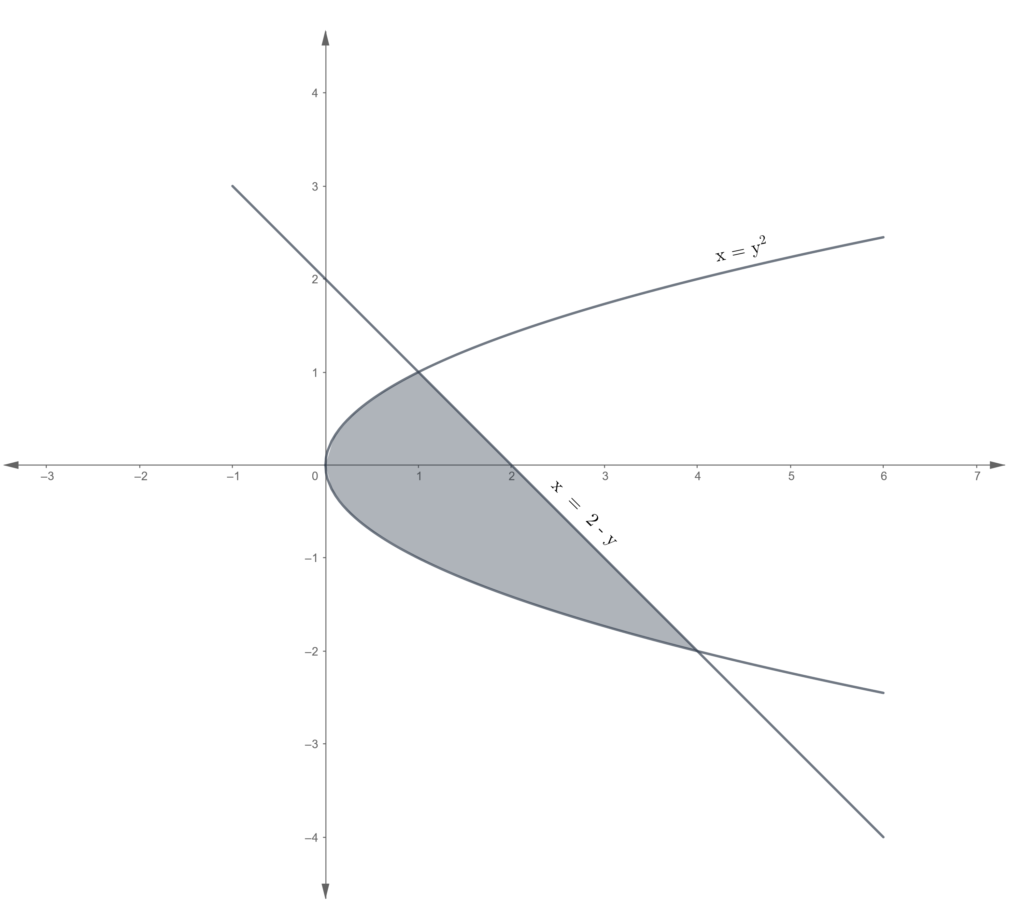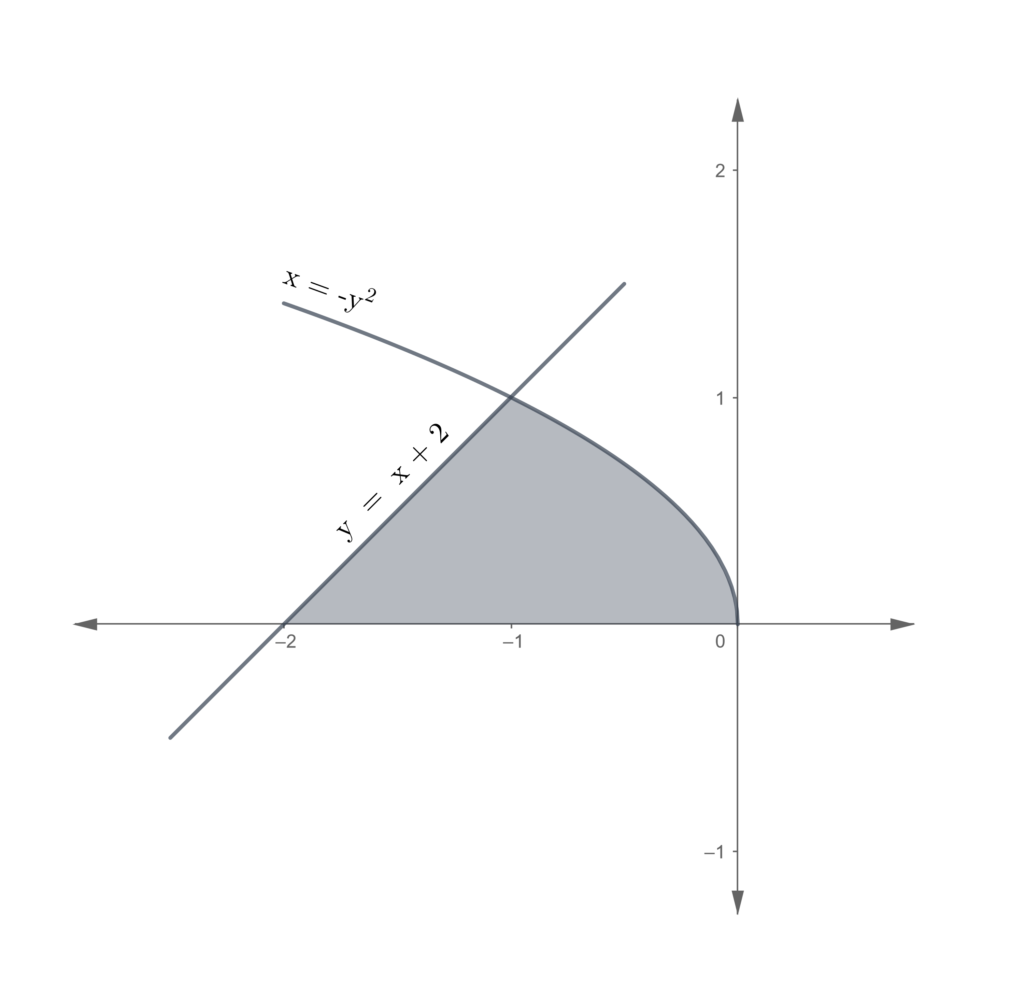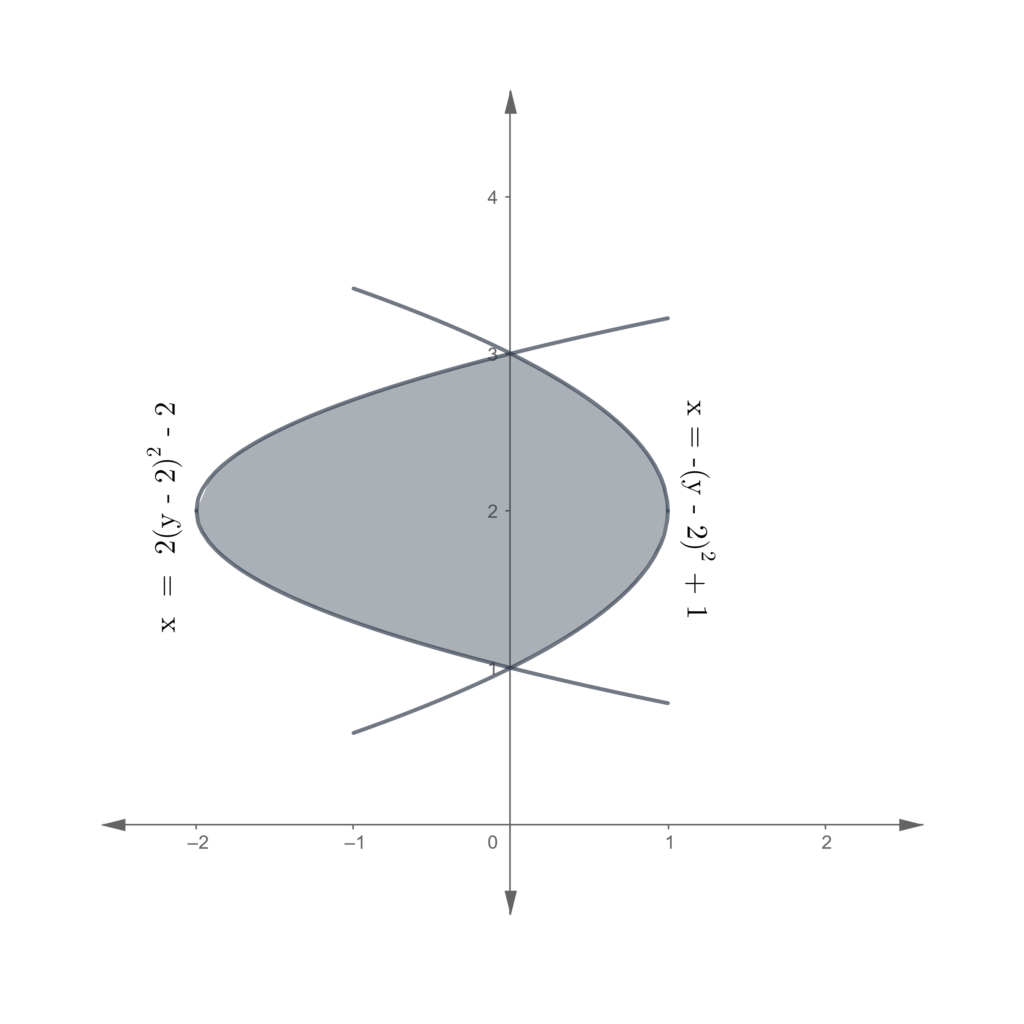Areas and volumes of regular figures
Exercises
Problem set
In each of the following, assume that you do not have a formula to calculate the required quantity.
- Express the area of a semicircle of radius
as a definite integral. Use the division strategy of dividing the semicircle into vertical sections.
- Express the area of a circle of radius
as a definite integral. Use the division strategy of dividing the circle into concentric rings.
- Express the area of a circle of radius
as a definite integral. Use the division strategy of dividing the circle into sectors.
- Express the volume of a hemisphere of radius
as a definite integral.
- Express the volume of a cone, whose base has radius
and whose height is
, as a definite integral.
- Express the volume of a square pyramid, whose base has side length
and whose height is
, as a definite integral.
Areas enclosed by curves
Exercises
Problem set
In each of the following problems, find the area of the region enclosed.
Problem set
In each of the following problems, find the area of the region enclosed.
Problem set
In each of the following problems, find the area of the region enclosed.
Problem set
In each of the following problems, find the area of the region enclosed.
Problem set
In each of the following problems, find the area of the region between the curves given.
Problem set
In each of the following problems, find the area of the region enclosed.
Problem set
In each of the following problems, find the area of the region enclosed.
.
.
Problem set
In each of the following problems, find the area of the shaded region.
Volumes of solids of revolution
Exercises
Problem set
For each of the following, find the volume of the solid obtained by revolving the given curve about the given axis of revolution.
Problem set
For each of the following, find the volume of the solid obtained by revolving the region between the two curves about the given axis of revolution.
Problem set
For each of the following, find the volume of the solid obtained by revolving the region bounded as specified about the given axis of revolution.
Curve lengths and surface areas of solids of revolution
Exercises
Problem set
- Assume
is a function whose derivative
is continuous. Express the length of the curve
from
through
as a definite integral. Derive (jusitfy) your expression.
- Assume
is a function whose derivative
is continuous in
. Express the surface of the solid generated by revolving
about the
-axis as a definite integral. Derive (jusitfy) your expression.
- Find the length of the curve
.
- Find the volume of the solid obtained by revolving
about the the
-axis.
Acceleration, Velocity and Distance
Exercises
Problem set
- Assume velocity of a particle as a function of time is given by the functions
.
- Express the distance traveled by the particle between time units
and
approximately as a Riemann sum.
- Express the distance as a definite integral.
- Express the distance traveled by the particle between time units
- The velocity of an object moving along
-axis is given by
, where
is time in seconds. The object is at
initially.
- Model the displacement of the object from its initial position as a Riemann sum.
- Determine the object’s position after
seconds.
- The velocity of an object moving along
-axis is given by
, where
is time in seconds. The object is at
initially.
- Model the displacement of the object from its initial position as a Riemann sum.
- Determine the object’s position after
seconds.
- Model the total distance traveled by the object as a Riemann sum.
- Determine the distance traveled by the object in
seconds.
- The velocity of an object moving along
-axis is given by
, where
is time in seconds. The object is at
initially.
- Model the displacement of the object from its initial position as a Riemann sum.
- Determine the object’s position after
seconds.
- Model the total distance traveled by the object as a Riemann sum.
- Determine the distance traveled by the object in
seconds.
- The velocity of an object moving along
-axis is given by
, where
is time in seconds. The object is at
initially.
- Model the displacement of the object from its initial position as a Riemann sum.
- Determine the object’s position after
seconds.
- Model the total distance traveled by the object as a Riemann sum.
- Determine the distance traveled by the object in
seconds.
- The velocity of an object moving along
-axis is given by
, where
is time in seconds. The object is at
initially.
- Model the displacement of the object from its initial position as a Riemann sum.
- Determine the object’s position after
seconds.
- Model the total distance traveled by the object as a Riemann sum.
- Determine the distance traveled by the object in
seconds.
Problem set
- The acceleration of an object moving along
-axis is given by
, where
is time in seconds. The object’s initial position and initial velocity are
and
meter per second respectively.
- Model the velocity of the object as a Riemann sum.
- Determine the object’s velocity after
seconds.
- Determine the object’s position after
seconds.
- The acceleration of an object moving along
-axis is given by
, where
is time in seconds. The object’s initial position and initial velocity are
and
meter per second respectively.
- Model the velocity of the object as a Riemann sum.
- Determine the object’s velocity after
seconds.
- Determine the object’s position after
seconds.
Problem set
- Velocity graphs
- Assume the acceleration because of gravity is
. If an object is dropped from a building of height
, how long would the object take to hit the ground?
- Assume the acceleration because of gravity is
. If an object thrown into the air from the top of a building of height
with an initial velocity of
,
- What is the maximum height that the object reaches?
- What is the time it takes for the object to hit the ground?



